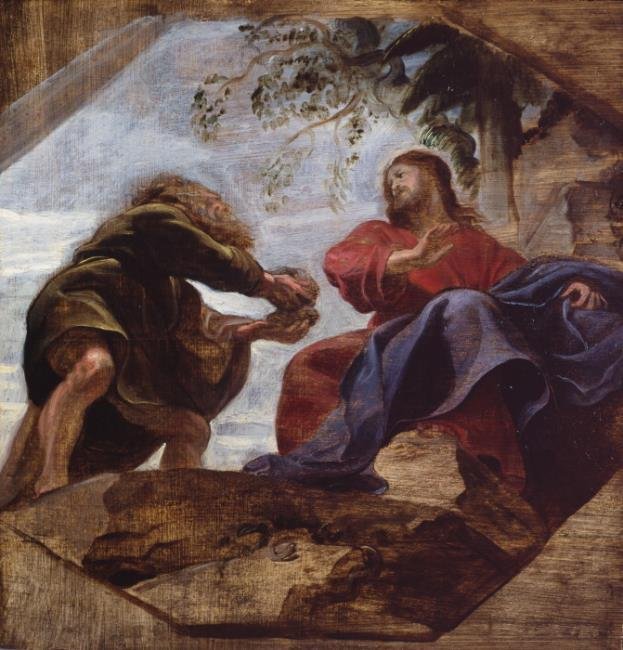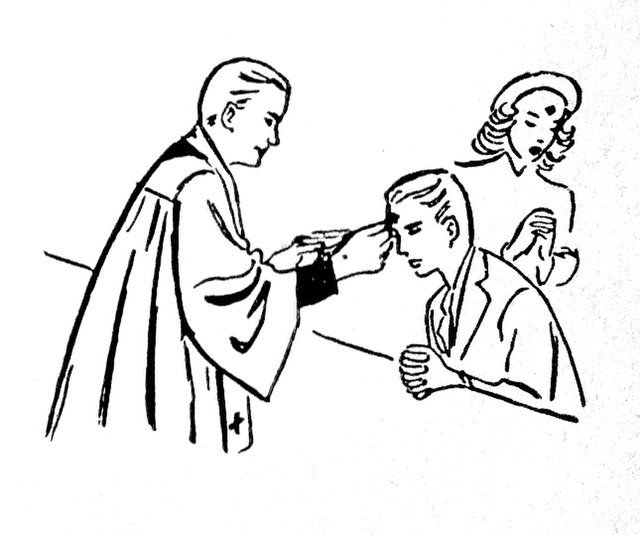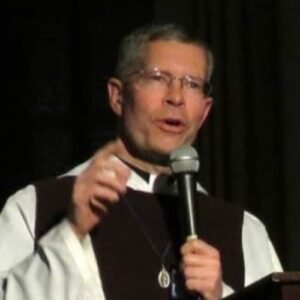by Rev. Fr. Benedict Hughes, CMRI
(Winter, 2018)
Why Did the Apostles Not Fast While Jesus Was With Them? When Did They Begin the Holy Practice?
One day the disciples of St. John the Baptist came to Jesus and asked why His disciples did not fast. They pointed out that they and the Pharisees often fasted, and that they had not observed the disciples of Jesus fasting. We could well understand why. Jesus traveled around continuously, and His disciples would have to eat whenever they were able. Jesus Himself had instructed them to “eat what is set before you.” (Luke 10:8). But in His reply to the question posed, Jesus gives another reason: “Can the wedding guests mourn as long as the bridegroom is with them? But the days will come when the bridegroom shall be taken away from them, and then they will fast.” (Matt. 9:15).
This reply of Jesus not only explains the reason for the apparent lack of penitential practice among His disciples, it also contains a prophecy. Note that Our Lord says that when He is taken away (by His Ascension into Heaven), then His followers will fast. And indeed that has been the case.

We know that the saints (and faithful Catholics) down through the centuries are renowned for their penance. Take, for example, the incredible penance of the holy Cure of Ars, who subsisted on a few cold potatoes per day. We can read in the lives of the saints throughout Church history of an eagerness to perform penance. Why? Because they understood its value for spiritual growth and the necessity of atoning for sin. In this, they were simply following the example of the early Christians.
In the Acts of the Apostles (the sacred book of the New Testament that tells the story of the early Church), we read about the conversion of St. Paul. On his way to arrest Christians at Damascus, the young man Saul was struck off his horse when he heard a voice saying, “Saul, Saul, why dost thou persecute Me?” On being then informed that it was Jesus Whom he was persecuting in His followers, he immediately realized that Jesus of Nazareth was truly the Messias. He then went into the city to await instructions on what he was to do. But note in this part of the story, that during the three days he waited for baptism, he neither ate nor drank. This is an important detail, because he had not been told to fast. He did so, prompted by his own conscience, which had been informed by the stories of the Old Testament.

(1568–1640), Public Domain, Via Wikimedia Commons
In fact, fasting and other forms of penance were common among the Israelites. There was one particular day in the entire year; i.e. – the Day of Atonement, upon which they were obliged to observe a strict fast until sundown, in order to atone for sin. We even read of the Ninevites (who were not members of the Chosen People), that upon the preaching of Jonas they observed a strict fast for three days to atone for their sins and to obtain God’s mercy. So Saul was merely following the custom he had learned in his studies of the Scriptures. Fasting was also frequent among the Pharisees and other Jews, for Jesus said, “When you fast, do not be as the Pharisees, who disfigure their faces….” In other words, it was a common practice.
We see this pattern being continued in the early Church. A good number of examples could be cited from the Acts of the Apostles. For brevity’s sake, let us quote just one: “And as they were ministering to the Lord and fasting, the Holy Spirit said, ‘Set apart for me Saul and Barnabas unto the work to which I have called them.’ Then, having fasted and prayed and laid their hands upon them, they let them go.” (13:2-3).
So we see that the practice of fasting and doing penance is Biblical, and that it is even common sense. One day, Jesus rebuked the cities that did not receive Him, saying, “Woe to thee, Corozain! Woe to thee, Bethsaida! For if, in Tyre and Sidon had been worked the miracles that have been worked in you, they would have repented long ago, sitting in sackcloth and ashes.” (Luke, 10:13). Moreover, Jesus makes clear that penance is not optional: “Unless you shall do penance, you shall all likewise perish.” (Luke 13:3). Since we are barraged by the temptations of the world, the flesh, and the devil, we must do penance in order to persevere in the grace of God and save our souls.
What is the Point of Fasting and Doing Penance?
The point here is that fasting and other forms of penance are thoroughly Christian practices, inspired by the example and teachings of Jesus Himself. We might even say that fasting and penance, among other things, indicate a true follower of Our Lord — to the point that a complete absence of penance indicates a sham Christianity. In our catechism we have learned about the Four Marks of the Church, which indubitably point out the true Church founded by Christ. Christ’s Church, we might add, will also be recognized by its promotion and practice of penance.

In this, we can see how utterly un-Christian are those Protestant sects that have no use for penance. After all, since Protestants believe that they are saved by faith alone, there is no need for them to do penance. They are already saved — or so they think. But if they would only seriously call to mind the words of Our Lord and the teachings of Scripture, they would see how utterly foolish it is to believe they can be saved without any need for penance. How far are their ideas from the teaching of St. Paul, who advised the early Christians: “Work out your salvation in fear and trembling” (Phil. 2:12)!
Is the Practice of Fasting and Penance Observed in the Conciliar Church?
This leads us to a logical question: What about the Conciliar Church? As one might expect, the idea of penance was thrown out for them decades ago, when Vatican Council II concluded in 1965. In 1966 Paul VI (whom “Pope” Francis has promised to canonize later this year!!) issued an Apostolic Constitution called Paenitemini, which drastically changed the laws of the Church regarding fasting and abstinence. Fasting, formerly observed throughout Lent, on Ember Days, and on certain vigils, was now restricted to just two days in the entire year! The decree also allowed the national bishops’ conferences to determine the days of abstinence. Today, members of the Conciliar Church are only told to abstain from meat on the Fridays of Lent and on Ash Wednesday. In place of abstaining from meat on the other Fridays throughout the year, they are urged to substitute works of charity.

Yet, one is forced to wonder how many of the members of the Conciliar Church actually observe even these meager rules for penance. When the “spirit of Vatican II” was first preached in the late 60’s and early 70’s, there was an over-emphasis on “love,” “joy,” and on God’s mercy, while topics such as “sin” and “hell” were seldom heard. Such was the effect of this kind of preaching; so much so, that the practice of confession practically ceased. The new definition of sin had eliminated any fear of God’s just wrath; along with it, the necessity of penance was all but forgotten.
We, however, understand the necessity of fasting and other forms of penance. By its means we atone for sin, we subdue the flesh and conquer temptation, and we grow in virtue and merit. In short, by penance performed with a right intention, we earn salvation. By penance we prove ourselves to be true disciples of Him who said that after His departure from this world, “then they (His disciples) will fast.”
–Taken from the Reign of Mary Quarterly Magazine, Issue 167



